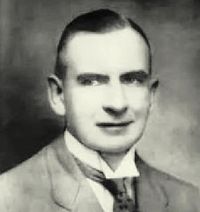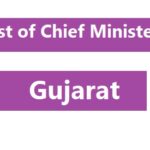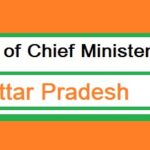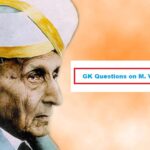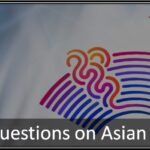Reserve Bank of India or RBI was established on 1st April 1935 under the Reserve Bank of India, Act. Initially, it was established as a private bank. After independence, it was nationalized on 1st January 1949. The headquarters of RBI is in Mumbai. The first governor of RBI was Osborne Smith who took the responsibility in 1935. Shaktikanta Das is the 25th and current RBI governor of India. Those students preparing for various examinations especially in the field of banking should know the names of all RBI Governors of India. Different GK questions are put up in exams like IBPS, SSC, RBI, SBI, etc. from the list of RBI Governors of India. In this post, we are going to provide the list of the names of all RBI Governors of India.
RBI Governors of India List (1935 to 2024)
Here is the list of all Governors of the Reserve Bank of India. We have included governors from both pre and post Independence eras.
- Sir Osborne Smith
- Starting of the term – 1st April 1935
- End of the term – 30th June 1935
- Duration (Term) in the office – 2 years and 90 days
- Background – Banker
- Office prior to RBI Governor of India – Managing Governor of the Imperial Bank of India
- Sir James Braid Taylor
- Starting of the term – 1st July 1937
- End of the term – 17th February 1943
- Duration (Term) in the office – 5 years 231 days
- Background – Indian Civil Service (ICS) officer
- Office prior to RBI Governor of India – Deputy Governor of the Reserve Bank of India, Controller of Currency
- Sir C. D. Deshmukh
- Starting of the term – 11th August 1943
- End of the term – 30th June 1949
- Duration (Term) in the office – 5 years 323 days
- Background – Indian Civil Service (ICS) officer
- Office prior to RBI Governor of India – Deputy Governor of the Reserve Bank of India, Custodian of Enemy Property
- Sir Benegal Rama Rau
- Starting of the term – 1st July 1949
- End of the term – 14 January 1957
- Duration (Term) in the office – 7 years 197 days
- Background – Indian Civil Service (ICS) officer
- Office prior to RBI Governor of India – Ambassador of India to the United States, Ambassador of India to Japan, Chairman of Bombay Port Trust
- K. G. Ambegaonkar
- Starting of the term – 14th January 1957
- End of the term – 28th February 1962
- Duration (Term) in the office – 45 days
- Background – Indian Civil Service (ICS) officer
- Office prior to RBI Governor of India – Finance Secretary
- H. V. R. Iyengar
- Starting of the term – 1st March 1957
- End of the term – 28th February 1962
- Duration (Term) in the office – 4 years 364 days
- Background – Indian Civil Service (ICS) officer
- Office prior to RBI Governor of India – Chairman of the State Bank of India (SBI)
- P. C. Bhattacharya
- Starting of the term – 1st March 1962
- End of the term – 30th June 1967
- Duration (Term) in the office – 5 years 121 days
- Background – Indian Audit and Accounts Service Officer
- Office prior to RBI Governor of India – Chairman of the State Bank of India, Secretary in the Ministry of Finance
- Lakshmi Kant Jha
- Starting of the term – 1st July 1967
- End of the term – 3rd May 1970
- Duration (Term) in the office – 2 years 306 days
- Background – ICS Officer
- Office prior to RBI Governor of India – Secretary to the Prime Minister of India
- B. N. Adarkar
- Starting of the term – 4th May 1970
- End of the term – 15th June 1970
- Duration (Term) in the office – 42 days
- Background – Economist
- Office prior to RBI Governor of India – Executive Director at the International Monetary Fund
- Sarukkai Jagannathan
- Starting of the term – 16th June 1970
- End of the term – 19th May 1975
- Duration (Term) in the office – 4 years 337 days
- Background – ICS Officer
- Office prior to RBI Governor of India – Executive Director at the World Bank
- N. C. Sen Gupta
- Starting of the term – 19th May 1975
- End of the term – 19th August 1975
- Duration (Term) in the office – 92 days
- Background – ICS officer
- Office prior to RBI Governor of India – Banking Secretary
- K. R. Puri
- Starting of the term – 20th August 1975
- End of the term – 2nd May 1977
- Duration (Term) in the office – 1 year 255 days
- Background – LIC
- Office prior to RBI Governor of India – Chairman and managing director of the Life Insurance Corporation
- M. Narasimham
- Starting of the term – 3rd May 1977
- End of the term – 30th November 1977
- Duration (Term) in the office – 211 days
- Background – Career Reserve Bank of India Officer
- Office prior to RBI Governor of India – Deputy Governor of the Reserve Bank of India
- I. G. Patel
- Starting of the term – 1st December 1977
- End of the term – 15th September 1982
- Duration (Term) in the office – 4 years 288 days
- Background – Economist
- Office prior to RBI Governor of India – Director of the London School of Economics, Deputy Administrator of the United Nations Development Programme, Chief Economic Adviser to the Government of India
- Manmohan Singh
- Starting of the term – 16th September 1982
- End of the term – 14th January 1985
- Duration (Term) in the office – 2 years 120 days
- Background – Economist
- Office prior to RBI Governor of India – Secretary in the Ministry of Finance, Chief Economic Adviser to the Government of India
- Amitav Ghosh
- Starting of the term – 15th January 1985
- End of the term – 4th February 1985
- Duration (Term) in the office – 20 days
- Background – Banker
- Office prior to RBI Governor of India – Deputy Governor of the Reserve Bank of India, Chairman of the Allahabad Bank
- R. N. Malhotra
- Starting of the term – 4th February 1985
- End of the term – 22nd December 1990
- Duration (Term) in the office – 5 years 321 days
- Background – Indian Administrative Service (IAS) officer
- Office prior to RBI Governor of India – Finance Secretary, Executive Director at the International Monetary Fund
- S. Venkitaramanan
- Starting of the term – 22nd December 1990
- End of the term – 21st December 1992
- Duration (Term) in the office – 2 years
- Background – IAS officer
- Office prior to RBI Governor of India – Finance Secretary
- C. Rangarajan
- Starting of the term – 22nd December 1992
- End of the term – 21st November 1997
- Duration (Term) in the office – 4 years 334 days
- Background – Economist
- Office prior to RBI Governor of India – Deputy Governor of the Reserve Bank of India
- Bimal Jalan
- Starting of the term – 22nd November 1997
- End of the term – 6th September 2003
- Duration (Term) in the office – 5 years 288 days
- Background – Economist
- Office prior to RBI Governor of India – Finance Secretary, Banking Secretary, Chief Economic Adviser to the Government of India.
- Y. Venugopal Reddy
- Starting of the term – 6th September 2003
- End of the term – 5th September 2008
- Duration (Term) in the office – 4 years 365 days
- Background – IAS Officer
- Office prior to RBI Governor of India – Executive Director at the International Monetary Fund, Deputy Governor of the Reserve Bank of India
- D. Subbarao
- Starting of the term – 5th September 2008
- End of the term – 4th September 2013
- Duration (Term) in the office – 4 years 364 days
- Background – Economist
- Office prior to RBI Governor of India – Finance Secretary, Member-Secretary of the Economic Advisory Council of the Prime Minister
- Raghuram Rajan
- Starting of the term – 4th September 2013
- End of the term – 4th September 2016
- Duration (Term) in the office – 3 years
- Background – Economist
- Office prior to RBI Governor of India – Chief Economic Adviser to the Government of India, Chief Economist of International Monetary Fund
- Urjit Patel
- Starting of the term – 4th September 2016
- End of the term – 10th December 2018
- Duration (Term) in the office – 2 year 98 days
- Background – Economist
- Office prior to RBI Governor of India – Deputy Governor of the Reserve Bank
- Shaktikanta Das
- Starting of the term – 12th December 2018
- End of the term – Incumbent
- Duration (Term) in the office – To be notified
- Background – IAS officer
- Office prior to RBI Governor of India – Member of the Fifteenth Finance Commission, Sherpa of India to the G20, Economic Affairs Secretary, Revenue Secretary
What are the powers of RBI Governors?
An RBI Governor has many important powers, some of which are as follows.
- The governor is responsible for providing licenses to different private and foreign banks in India.
- He is also responsible for regulating the financial system of the nation.
- The governor of RBI also promotes orderly development and maintenance of the foreign exchange market in India.
- He formulates the policies of RBI which is the most prestigious financial institution in India.
- The governor plays a very important role in controlling the interest rate such as repo-rate, reverse repo rate, etc.
Eligibility to become a RBI Governor
Please note that there is no fixed set of eligibility criteria for the post of RBI Governor. Still, we can say that he should be a highly qualified, respected, and courageous economist. Given below are some of the criteria that the RBI Governor must meet as per our observations of the post Governors qualification.
- You must have a degree from a prestigious University. For example – Urjit Patel is a graduate of Yale University.
- Being an IAS (Finance Secretary) or renowned Economist can also help.
- Previous experience with Financial Institutes like IMF or World Bank is also desirable.
Frequently Asked Questions
The first Indian to become an RBI Governor was Sir C.D. Deshmukh.
The Prime Minister Office (PMO) appoints the RBI Governor on the recommendation of the finance minister of India.
The tenure of an RBI governor is 3 years. However, it can be extended by 2 more years. The governor can be terminated in the following conditions.
On dismissal of his services by the president of India.
If he submits his resignation to the president of India.
The RBI was established on 1st April 1935 under the RBI Act, 1934.
The RBI was nationalized after independence on 1st January 1949.

